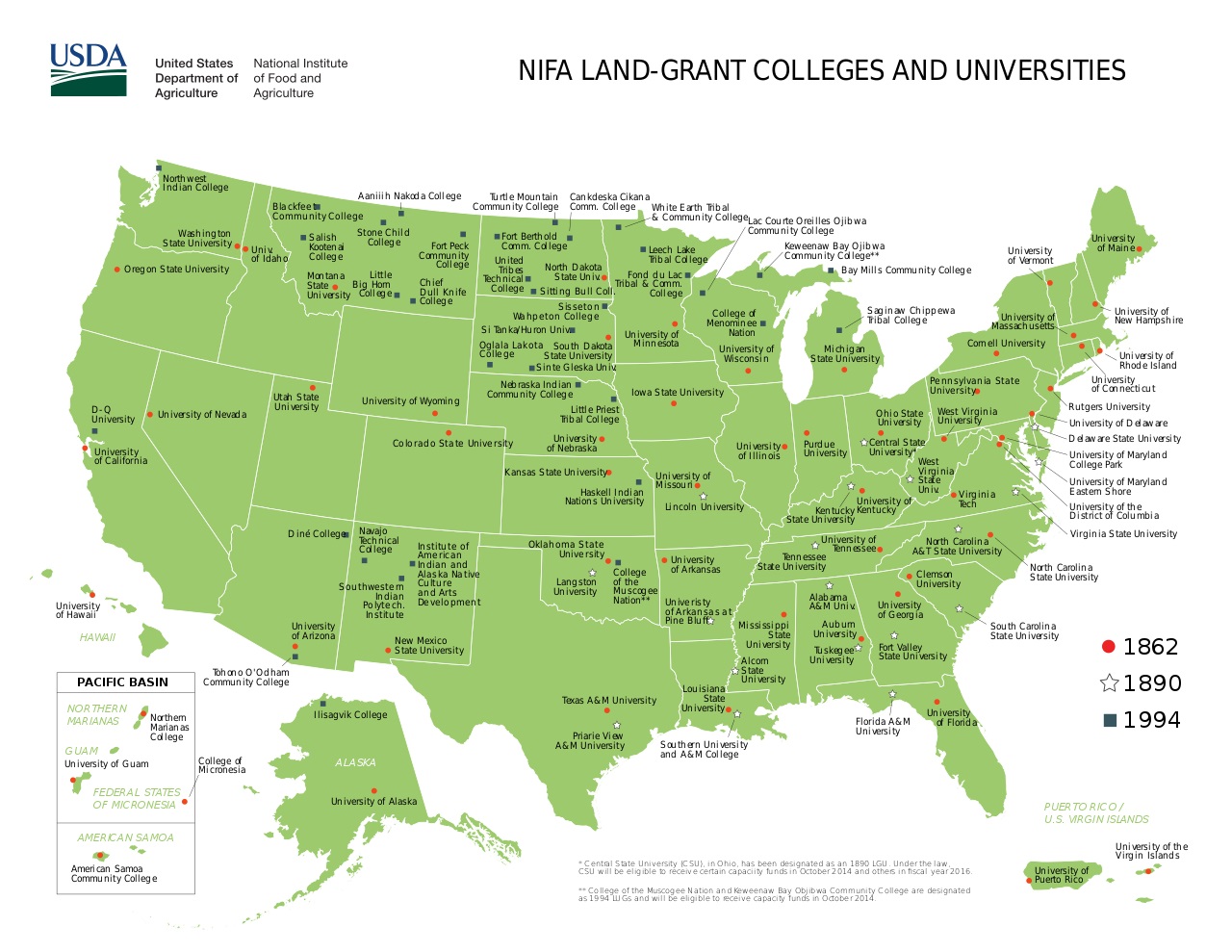IEEE Rural Electric Power Conference | Agricultural Extension Offices
“Agriculture is our wisest pursuit, because it will in the end
contribute most to real wealth, good morals, and happiness.”
— Thomas Jefferson
From the Wikipedia: Land-grant university
“…A land-grant university (also called land-grant college or land-grant institution) is an institution of higher education in the United States designated by a state to receive the benefits of the Morrill Acts of 1862 and 1890.
The Morrill Acts funded educational institutions by granting federally controlled land to the states for them to sell, to raise funds, to establish and endow “land-grant” colleges. The mission of these institutions as set forth in the 1862 Act is to focus on the teaching of practical agriculture, science, military science, and engineering (though “without excluding… classical studies”), as a response to the industrial revolution and changing social class. This mission was in contrast to the historic practice of higher education to focus on a liberal arts curriculum. A 1994 expansion gave land grant status to several tribal colleges and universities….”
Link to the original legislation:
THIRTY-SEVENTH CONGRESS / Approved July 2, 1862
The Morrill Land-Grant Act has not undergone significant changes in its core structure within the past decade. However, there have been important developments and discussions surrounding its implementation, particularly regarding the use of land originally designated under the Act.
One key area of focus has been the ongoing management of trust lands associated with land-grant universities. Investigations have revealed that many of these lands continue to generate substantial revenue, often through activities such as fossil fuel production, mining, timber sales, and agriculture.
For instance, between 2018 and 2022, trust lands associated with land-grant universities generated over $6.7 billion in revenue. These investigations have also highlighted the historical context of how these lands were acquired, often from Indigenous nations, sparking ongoing debates about equity and restitution.
📢 REMINDER
If you are seeking eligibility for the Farmer Bridge Assistance Program, ensure your 2025 acreage reporting is factual and accurate by 5 PM ET on Dec. 19, 2025. Qualifying FBA payments are scheduled to be released by Feb. 28, 2026. https://t.co/ABBRK1b9xh pic.twitter.com/cLHZI2zeLq
— Dept. of Agriculture (@USDA) December 15, 2025
Several universities associated with the Morrill Land-Grant Act continue to generate significant revenue from fossil fuels, timber, and agricultural activities. Here are some examples:
- Washington State University (WSU): WSU benefits from timber sales on its trust lands, which have generated over $1.1 billion in revenue from 1889 to 2022. These lands are used for timber production, grazing, and other activities (Grist).
- University of Arizona: The university’s trust lands are involved in grazing, timber, and fossil fuel production. These lands generate revenue through leases for activities such as mining and oil extraction (Grist).
- University of Texas: The Permanent University Fund, which includes land-grant lands, generates revenue primarily through oil and gas production. The University of Texas system benefits significantly from these fossil fuel activities (Grist).
- University of Wyoming: Like other land-grant institutions, the University of Wyoming manages trust lands that produce revenue through activities like coal mining and grazing (Grist).
These activities raise important questions about the environmental and ethical implications of continuing to use land-grant trust lands in this manner, especially given the historical context of how these lands were acquired.
Point / Counterpoint









